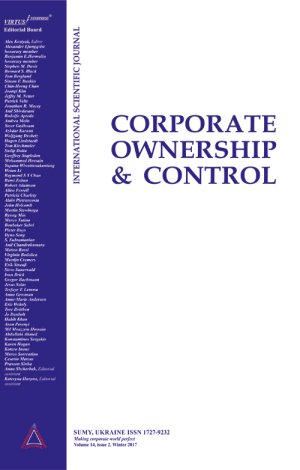
-
 Journal menu
Journal menu

- General information
- Editorial Board and External Reviewers
- Journal Policies
- Publication Ethics and Malpractice Statement
- Instructions for authors
- Paper reviewing
- Article processing charge
- Feedback from stakeholders
- Journal’s Open Access statement
- Order hard copies of the journal
- 50 most cited papers in the journal
FIRM SIZE, CORPORATE LEVERAGE AND CORPORATE DIVIDEND: EVIDENCE FROM KOREAN BANKING INDUSTRY
Download This ArticleSeok Weon Lee
Abstract
This paper examines how the dividend policy of banks is associated with the level of safety of the banks. As the proxy for the safety of the bank, we employ the asset size and leverage measures. Considering that the explicit protection system of deposit insurance backing up the banking industry is prevailing and implicit forbearance policy practiced by the banking regulators generally would not allow the failure of especially large banks, the banks with larger asset size, other things being equal, would be considered safer than smaller banks. Also, following the implications of finance literature, higher leverage is believed to represent higher riskiness and the firms in higher leverage positions would have greater risk-taking incentives to maximize potential upward gains from high profit. From the panel data of Korean banks during 1994-2005, we find that the banks in a safer position significantly pay more dividends. That is, the banks with larger asset size and lower leverage tend to pay more dividends. In the tests employing partitioned samples and interaction variables for risk characteristics, we find more transparent and consistent results.
Keywords: Leverage, Asset Size, Dividend Policy, Banking Industry, Bank Risk
How to cite this paper: Lee, S. W. (2009). Firm size, corporate leverage and corporate dividend: Evidence from Korean banking industry. Corporate Ownership & Control, 6(4-2), 317-322. https://doi.org/10.22495/cocv6i4c2p6

















